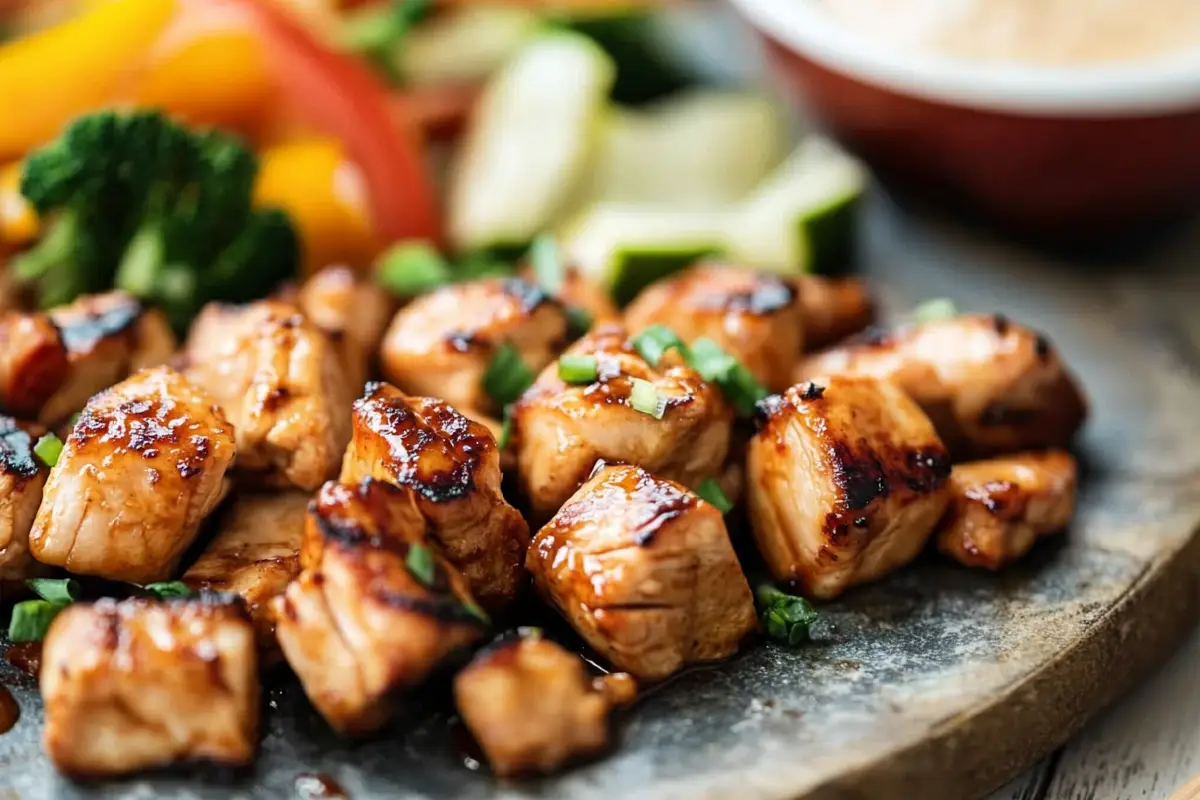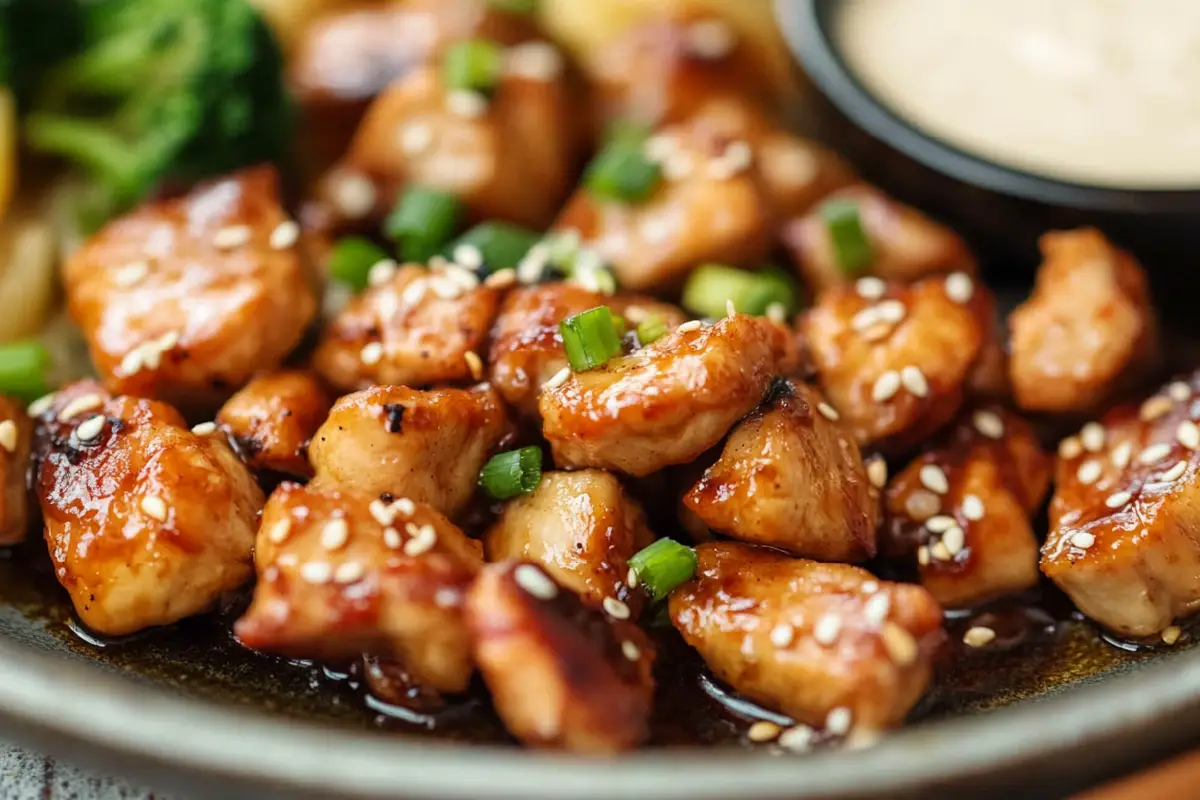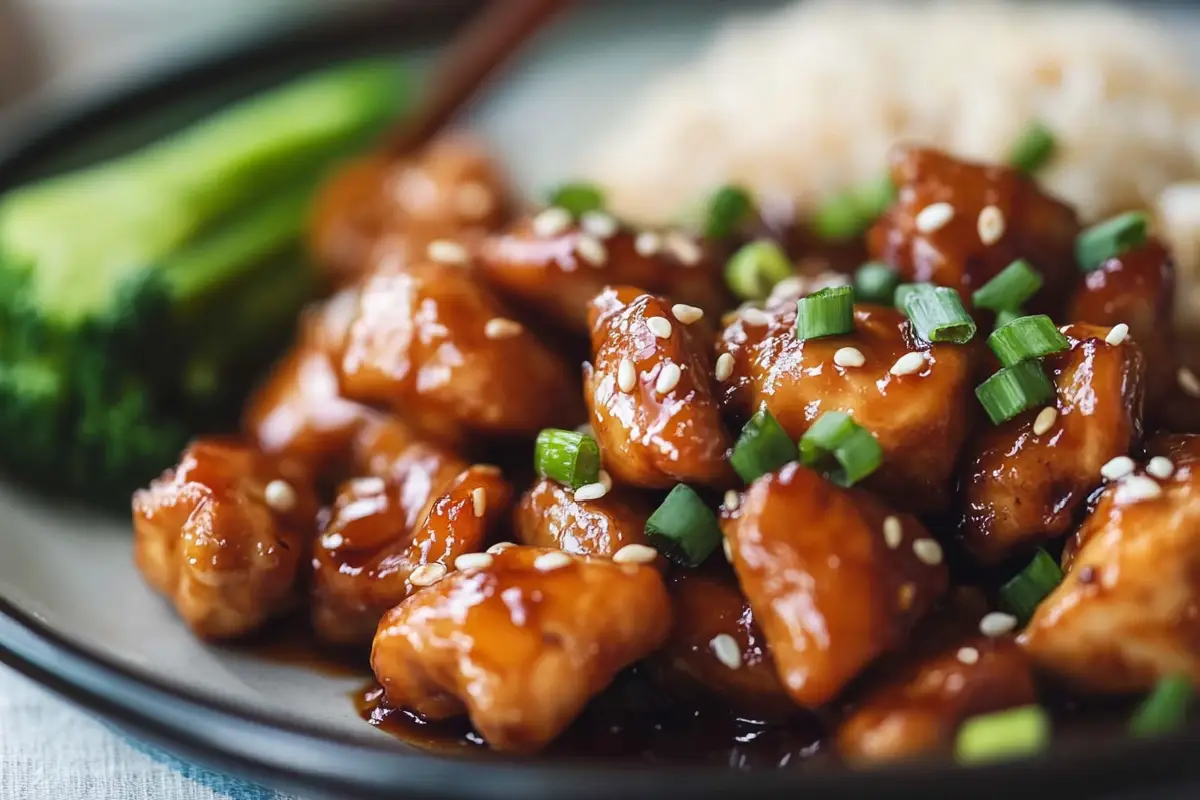Hibachi, a Japanese style of cooking on a high-heat grill, is renowned for its bold flavors, theatrical presentation, and simplicity. But what gives hibachi its signature taste? The answer lies in the expert use of seasonings that highlight the freshness of meats, vegetables, and rice. These seasonings not only add flavor but help maintain the balance of savory, salty, and umami, which are the core tastes in Japanese cuisine. So let’s check What Seasoning Do They Use For Hibachi.
This comprehensive guide will explore the various seasonings that contribute to the iconic taste of hibachi dishes, along with detailed tips and techniques to help you recreate those restaurant-quality flavors at home. Whether you’re preparing meats, vegetables, or fried rice, mastering these seasonings will take your hibachi dishes to the next level.
Introduction to Hibachi Seasoning
In hibachi cooking, simplicity is key. Chefs rely on a small set of basic seasonings to create layers of flavor. The three pillars of hibachi seasoning include:
- Garlic Butter: A mixture of butter and minced garlic, this adds richness and depth to almost every hibachi dish.
- Soy Sauce: A salty, umami-rich ingredient, soy sauce enhances the natural flavors of meats and vegetables.
- Salt and Pepper: Although simple, salt and pepper are used to balance flavors and bring out the natural taste of each ingredient.
These seasonings are layered throughout the cooking process to build flavor. For example, garlic butter is typically applied early, allowing its rich flavors to seep into the food as it cooks. Soy sauce is often added later to create a savory glaze. The simplicity of these ingredients belies the complexity of the flavors they create when combined in the right way.
The Role of Garlic Butter in Hibachi
Garlic butter is a key component in many hibachi dishes. It is used to sauté meats, vegetables, and even rice, giving the food a luxurious, creamy texture while adding a powerful garlic flavor. The butter caramelizes on the grill, adding richness and depth to the dish.
To make garlic butter, simply melt butter and mix it with minced garlic. For an extra kick, you can add a pinch of salt or a splash of soy sauce. This combination creates a balanced flavor that enhances both savory and sweet dishes. The butter also helps prevent the food from sticking to the grill, making it an essential part of the cooking process.
If you love the rich, creamy flavor of garlic butter, consider experimenting with other recipes that incorporate this ingredient, like this cheesy mashed potatoes recipe, which uses garlic butter to enhance the dish’s creamy texture.
Common Seasonings in Hibachi

While garlic butter plays a major role, other seasonings are essential in achieving the perfect hibachi flavor. Here’s a breakdown of the most common ingredients:
- Soy Sauce: An indispensable ingredient in hibachi, soy sauce adds a salty, umami-rich flavor that complements the richness of garlic butter. It is used both during the cooking process and as a finishing touch, helping to create a glaze over the meats and vegetables.
- Salt and Pepper: Hibachi chefs use salt and pepper to season the food according to taste. The salt enhances the natural flavors of the ingredients, while pepper adds a mild heat that balances the richness of the butter and soy sauce.
- Sesame Seeds: Often sprinkled over grilled vegetables and meats, sesame seeds add a pleasant crunch and a subtle nutty flavor.
- Sake: A touch of sake, a traditional Japanese rice wine, adds a sweet note to the savory flavors. Hibachi chefs often use sake during the cooking process to deglaze the pan or grill, which helps release the caramelized bits of food and enhances the overall flavor.
For those looking to explore more ways to balance salt, umami, and sweetness in their cooking, this seasoning guide for beef stew provides additional insights on building rich flavors through simple seasonings.
Specialty Oils and Sauces Used in Hibachi
Beyond the basics of garlic butter and soy sauce, hibachi chefs often rely on specialty oils and sauces to enhance the dish. These ingredients add complexity to the flavor profile and elevate the overall dining experience.
- Sesame Oil: Known for its rich, nutty flavor, sesame oil is often combined with vegetable oil in hibachi cooking. A small amount of this oil goes a long way in adding depth to the dish, making it a staple in stir-frying vegetables or meats.
- Ponzu Sauce: A tangy, citrus-based sauce, ponzu offers a refreshing contrast to the rich flavors of garlic butter and soy sauce. It is commonly used as a dipping sauce for hibachi meats or drizzled over vegetables.
- Japanese Worcestershire Sauce: This sauce provides a complex, slightly sweet, and umami-rich flavor that pairs well with grilled meats. It can be mixed with soy sauce or used as a standalone sauce for marinating.
- Mirin: A sweet rice wine similar to sake, mirin adds a delicate sweetness to sauces and marinades. It is often used in tandem with soy sauce to balance the saltiness with a touch of sugar.
These oils and sauces add layers of flavor that elevate hibachi dishes from simple grilled meats to a symphony of tastes. They also help achieve the perfect balance of salty, sweet, and umami, which is the hallmark of Japanese cuisine.
How Hibachi Chefs Use Seasoning Techniques
In hibachi cooking, the way seasonings are applied is just as important as the ingredients themselves. Timing and technique play a key role in ensuring that the flavors are absorbed into the food and properly balanced.
- Layering Flavors: Hibachi chefs layer flavors throughout the cooking process. First, the food is sautéed in garlic butter to add richness. Then, as the food cooks, soy sauce is drizzled over to deepen the flavor and create a glaze. Finally, chefs add a splash of sake or mirin to add sweetness and a subtle aroma to the dish.
- High-Heat Cooking: The high heat of the hibachi grill allows the seasonings to caramelize quickly, locking in the flavors. By using butter and oil at high heat, hibachi chefs achieve a crispy, golden-brown exterior on the meats while keeping the inside juicy and tender.
- Finishing Touches: Once the food is cooked, chefs often sprinkle sesame seeds or drizzle ponzu sauce for added texture and flavor. These finishing touches help balance out the richness of the garlic butter and soy sauce.
Seasoning for Specific Hibachi Dishes
The exact seasonings used can vary depending on the dish. Here’s a guide to how hibachi chefs season various ingredients:
- Meat (Chicken, Beef, Shrimp): Hibachi meats are seasoned with garlic butter and soy sauce. For an added layer of flavor, chefs often sear the meats with a touch of sake to deglaze the pan and create a rich sauce.
- Vegetables: Vegetables like onions, zucchini, and mushrooms are typically sautéed in garlic butter and seasoned with soy sauce and sesame oil. For a final touch, chefs often sprinkle sesame seeds over the vegetables before serving.
- Rice and Noodles: Hibachi fried rice is stir-fried with garlic butter, soy sauce, and scrambled eggs. Sometimes vegetables like carrots and peas are added for texture and flavor. For noodles, the process is similar but with the addition of sesame oil to give the noodles a slightly nutty flavor.
This combination of seasoning and technique helps create the signature flavors that make hibachi so popular. If you’re interested in more ways to season meats, try experimenting with this bang bang chicken recipe, which offers a flavorful marinade similar to hibachi seasonings.
Dipping Sauces to Enhance Hibachi Flavors
No hibachi meal is complete without dipping sauces. These sauces add an extra layer of flavor to the meal and allow diners to customize their experience.
- Ginger Sauce: A tangy and slightly spicy sauce made from ginger, soy sauce, and vinegar. It’s perfect for dipping grilled meats, especially beef and chicken.
- Yum Yum Sauce: A creamy, slightly sweet sauce made with mayonnaise, tomato paste, and a blend of spices. It’s especially popular with shrimp and vegetables.
- Ponzu Sauce: This citrus-based sauce is used as a lighter alternative to soy sauce. Its refreshing acidity pairs well with grilled vegetables and meats, particularly seafood.
Dipping sauces allow diners to add flavor as they see fit, making the hibachi experience interactive and customizable.
FAQs
What gives hibachi its distinct flavor?
The combination of garlic butter, soy sauce, and sesame oil provides the foundation for the unique taste of hibachi. Chefs carefully balance these flavors by applying them at various stages of cooking to create a complex, well-rounded dish.
What type of oil is used in hibachi cooking?
Hibachi chefs typically use a blend of vegetable oil and sesame oil. The neutral taste of vegetable oil allows the flavors of the soy sauce and garlic to shine, while sesame oil adds a rich, nutty aroma.
Is MSG used in hibachi cooking?
Most hibachi restaurants do not use MSG, relying instead on the natural flavors of soy sauce, garlic butter, and sake to enhance the dish. The depth of flavor comes from fresh ingredients and expert seasoning techniques.
What’s the difference between hibachi and teppanyaki?
While both involve grilling, hibachi uses an open flame grill, whereas teppanyaki is cooked on a flat iron griddle. The seasonings and ingredients are similar, but the cooking techniques and presentation differ.
Conclusion: Bringing Hibachi Seasoning Into Your Home Kitchen

Recreating hibachi at home is all about mastering the balance of garlic butter, soy sauce, and other essential seasonings. By understanding the timing, layering, and application of these flavors, you can bring the bold, savory taste of hibachi to your kitchen. Whether you’re preparing a quick stir-fry or a full hibachi meal, these seasonings will ensure that your dishes are full of rich, umami goodness.
For more inspiration. Try expanding your culinary repertoire with this seafood boil sauce recipe, which offers a similarly bold and flavorful profile.

